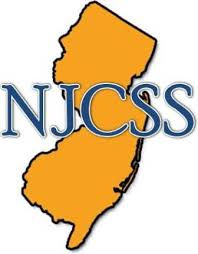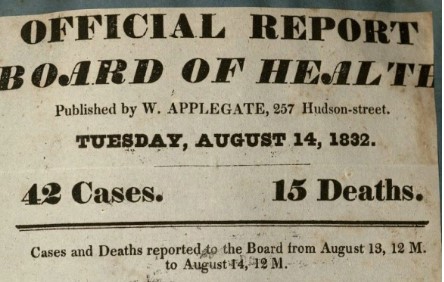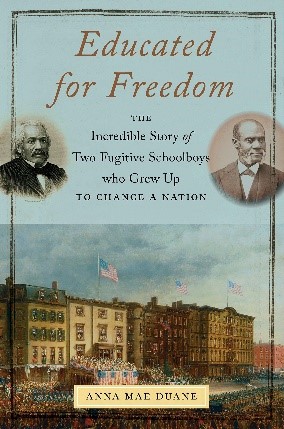Local History: The Great Depression in New York City
Reprinted from New York Almanack based on an article from the Blackwell’s Almanac, a publication of the Roosevelt Island Historical Society. https://www.newyorkalmanack.com/2023/09/great-depression-in-new-york-city/
As the 1920s advanced, the economy soared. But with that dramatic expansion came irrational exuberance and unchecked speculation: stock prices reached levels that had no basis in reality; margin purchases were rampant; banks handed out loans lavishly and imprudently; and giddy product production resulted in a vast oversupply of goods. On Tuesday, October 29, 1929, it all came crashing down. This is the story of the Great Depression in New York City.
After an erratic week in which stocks, including blue chip stocks, mostly declined, waves of panicked investors sold off their shares, driving the market ever downward. On that one day, now known as Black Tuesday, the market lost $14 billion in value; over the ensuing week, it erased another $30 billion — eventually suffering the staggering loss of 89.2% over its peak in early September.
Bank failures and business bankruptcies followed, presaging a decade of unprecedented economic hardship. New York City came to be viewed as “the symbolic capital of the Depression, the financial capital where it had started, and the place where its effects were most keenly felt.” Many residents lost their savings, their jobs and their homes. By 1932, half the city’s factories were closed, almost one-third of New Yorkers were unemployed (vs. one-quarter of the rest of the country and over one-half in Harlem), and some 1.6 million residents were on relief. Those who remained employed and therefore ineligible for the dole were often forced to take severe pay cuts.
At the time of the crash, under Mayor Jimmy Walker, there were few centralized municipal services that could be tapped for jobs or rescue: there were no central traffic, highway or public works department; street-cleaning was a function of individual boroughs; there were five separate parks departments; unemployment insurance was non-existent and, in the beginning, the Department of Public Welfare had no funds available. New York City, like most cities, was dependent on charitable institutions and alms houses to succor the poor, the homeless and the hungry. Yet these organizations publicly admitted their inability to meet the heavy demands being made of them.
In March 1930, 35,000 out-of-work protesters marched toward City Hall as part of International Unemployment Day organized by the Communist Party. They were met with violent attack by the New York Police Department. Several years later, it was the Black and Latino population’s turn. In addition to being jobless, they had to deal with blatant discrimination, including exclusion from more than 24 of the city’s trade unions and rejection at public work sites. With tempers boiling, a furious Harlem mob vandalized white-owned stores. Some 4,000 individuals took part, inflicting over $2 million in damages, resulting in 30 hospitalizations and several deaths. While an investigation into discriminatory practices was launched, little came of it and the situation continued unchanged.
Riots in New York flared and petered out. What didn’t peter out was the sheer fight to survive – for the hungry, the need to eat, and for the homeless, the need to find shelter. Breadlines and soup kitchens were one aspect of the fight. People lined up daily in long, snaking queues outside bakeries or pantries to score a ration of day-old bread or thin soup. To hide their humiliation from neighbors, many would leave their homes dressed up as if they were going to work. Once on the line, they just stared straight ahead, refusing to interact with their downtrodden peers — in fact, refusing to admit to themselves where they were.
Thousands evicted from their homes took to living in shacks in parks or backstreets. As more and more homeless joined these camps, they grew into little shantytowns nicknamed “Hoovervilles” in condemnation of the inactivity of President Herbert Hoover to remedy the situation. The largest such settlement was located next to the Reservoir in Central Park. Ironically, many of the Hooverville men were construction tradesmen — bricklayers, stone masons, carpenters — who had helped build the luxury buildings surrounding the park and who now set to building their own shanties out of scavenged materials. Despite the skill and artistry with which these abodes were constructed, they were illegal; so both local and federal authorities regularly raided the settlements, destroying the shelters and scattering their inhabitants.
Conditions were dire and pleading letters from city officials and residents alike piled up in the Mayor’s office. Finally, in October 1930, Jimmy Walker created the Mayor’s Official Committee for Relief of the Unemployed and Needy, and things started to happen. By November there was:
- a City Employment Bureau, which obviated the problem of job-seekers having to pay private employment firms;
- a stop to the eviction of poor families for rent arrears;
- a large-scale investigation by the police to determine needs in all 77 precincts;
- a windfall of contributions to unemployment relief from police and other city employees;
- an expansion of city lodging facilities; and
- a special Cabinet Committee to deal with questions of food, clothing and rent.
In the first eight months of its existence, the Committee raised some $1.6 million. Direct relief funds were paid to 11,000 families, while 18,000 tons of food, including Kosher food, was given out to almost a million families. (Night patrolmen spent a good part of their shifts packing and wrapping these food parcels.) The money also paid for coal, shoes and clothing. Another city agency, the Welfare Council, disbursed over $12 million for relief and emergency work wages. These funds too came from voluntary donations. Private citizens contributed; sports teams organized exhibition matches (for example Notre Dame football vs. the New York Giants); and Broadway staged special benefit performances.
For a while spirits rose and hopes of normalcy returned. But by April 1931, it was clear that private welfare measures and one-off City actions could not keep up with the growing distress. Help was needed and it came from a now-familiar individual — Franklin Delano Roosevelt, not as president, but as Governor of New York State. Despairing of any constructive efforts by the Federal government, Roosevelt, unique among governors to accept liability for his constituents, declared: “upon the State falls the duty of protecting and sustaining those of its citizens who, through no fault of their own, find themselves… unable to maintain life.” By August 1931, foreshadowing elements of the future New Deal, a robust public works program was in effect to reduce unemployment. State income tax was increased by 50% and the Comptroller authorized the issuance of revenue bonds at both the state and local level. Some would say that New York City was in better shape than many other cities. Yet it was still on the critical list.
It wasn’t until 1932, when Walker resigned amid an investigation for graft and Herbert Hoover was voted out of office, that the way was paved for major innovations. Newly elected President FDR embodied the optimism of his catchy campaign song, “Happy Days Are Here Again.” Within a couple of years, he promulgated the historic, blockbuster New Deal, and working in close partnership with newly elected Mayor Fiorello LaGuardia, transformed both the country and the City. The “New Deal” New York — the most populous American city with almost seven million residents — was the single greatest beneficiary of the New Deal’s Works Project Administration (WPA) in the entire U.S.
Under the WPA, more than a dozen federal agencies paid for the labor and materials to support hundreds of projects designed to put New Yorkers back to work. The New Deal built housing, schools, courthouses, roads, hospitals and health clinics, libraries, post offices, bridges, and highways. It was the impetus and money behind the Triborough Bridge, LaGuardia Airport, the Lincoln Tunnel, and the East River (FDR) Drive. It also gave the city an extensive system of recreational facilities, including swimming pools, playgrounds, ball fields, hiking trails, and parks.
But construction wasn’t its only recipient. FDR, Eleanor Roosevelt and Harry Hopkins (head of the WPA) recognized that funding culture and practitioners of culture was just as important. (“Hell, they’ve got to eat just like other people,” Hopkins is reported to have said). So, jobless artists, designers, craftsmen and photographers were hired to embellish public spaces with murals and sculptures, while posters publicized other WPA programs, and illustrations, photos and crafts found their way into newly opened galleries and respected museums. Playwrights, writers, actors and singers were paid to create theatrical shows — even Yiddish and German theater. And out-of-work musicians and composers of all stripes (classical, folk, jazz, light opera) were employed to give concerts indoors and out. At the same time, New Deal legislation began strengthening workers’ rights by allowing them to organize, earn a minimum wage and, as discussed below, obtain unemployment compensation and sign up for Social Security.
When Frances Perkins, a fierce advocate of social justice and economic security, was tapped as Secretary of Labor, she brought a list of proposals for FDR’s approval. Among them were unemployment insurance and what she called “old age” insurance. Both of them knew that the development of such programs would encounter many obstacles, not the least of which would be challenges to their constitutionality.
Be that as it may, in 1935, the enabling legislation passed overwhelmingly and FDR authorized the establishment of unemployment insurance and Social Security. And in 1937, the Supreme Court affirmed the constitutionality of levying taxes to fund both programs. IBM won the bid to create the largest and most complicated data processing system ever built. It even designed novel equipment for the unprecedented task of enrolling some 30 million employers and workers, and registering their contributions into the Social Security system for later retirement payouts. According to Perkins, “Nothing [other than the Great Depression] would have bumped the American people into a social security system except something so shocking, so terrifying, as that depression.”
Above and beyond the homeless, 30% of the City’s housed population lived in deteriorating, squalid tenements. There were other slums deemed “unfit for human habitation.” The National Recovery Act of 1933 authorized the clearance of slums, repair of salvageable structures and construction of low cost housing. And the country’s very first “public housing” — a previously unheard of concept — was built in New York under the newly formed New York City Housing Authority (NYCHA). The first three public projects were: First Houses, between First Avenue and Avenue A, from Second to Third Streets in the East Village; Williamsburg Houses, Scholes to Maujer Streets, Leonard Street to Bushwick Avenue, Williamsburg, Brooklyn, Harlem River Houses, Seventh Avenue to Macombs Place, Harlem River Drive, and 151st to 153rd Streets in Harlem. Their public ownership represented a radical step that both created jobs and sheltered people in up-to-date homes. By 1941, nine such projects had been developed in New York City, providing 11,570 units. They are all still with us and the first three have been designated New York City landmarks.
The sheer range of educational programs implemented by the New Deal was remarkable. From kindergarten to college (for example, Hunter College, Brooklyn College, the Merchant Marine Academy in the Bronx), new buildings expanded the student population. Thousands of teachers were hired, and adjunctive programs such as preschool, work-study programs for young people, and vocational classes for adults were instituted. Community education classes were held in libraries, settlement houses, local facilities, trade union halls, park buildings, and even on the radio. There was no end to what a willing individual could learn, including driving, English, home arts, visual arts and new vocational skills. Much of the funds secured for New York City can be directly attributed to LaGuardia’s force of personality. According to Roosevelt, he would show up in Washington “and tell me a sad story. The tears run down my cheeks and tears run down his cheeks and the first thing I know he has wrangled another $50,000,000.”
For many City residents, lack of work had devolved into declining health, malnutrition, and increasing rates of infant mortality. New Deal funding produced new hospitals and neighborhood health clinics. The latter were often located in or near public housing developments and provided free medical and dental care, including immunizations, for all ages. The clinic doctors and nurses also visited homes and schools, and gave classes in healthy living. The clinics even sent housekeepers to help out where parents were ill. Access to regular health care was a first for many New Yorkers and its effects were incontestable: decreased infant mortality, a drop in serious illness and a decline in the suicides that so darkened the Depression years. It took entry into the Second World War to completely obliterate the Great Depression. Tens of thousands of men went off to battle, while the rest of the country was galvanized into full employment by the war effort. Still, the New Deal, with its plethora of alphabet soup subsidiaries, was nothing short of miraculous. It carried the country and New York City through one of the most challenging eras in our history. It transformed the relationship of government to its citizens — embodying a dynamism that has strengthened New York through the years and continues to empower it to this day








